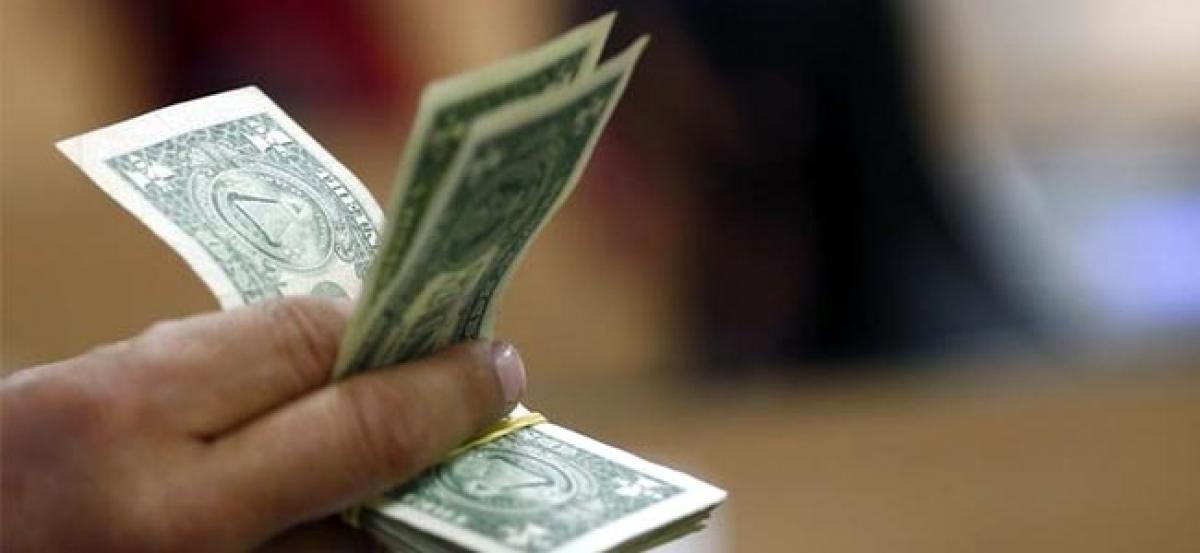Live
- Andhra Pradesh: Jagan flays Chandrababu-led govt for neglect of education
- Sri Lanka issues flood warnings for 12 flood-prone river basin areas
- IPL 2025 Auction: Venkatesh Iyer sold to KKR for Rs 23.75 cr, Stoinis joins PBKS for Rs 11 crore
- Kharge to lead Opposition strategy meeting as Parliament session kicks off on Monday
- Three killed in firing as violence breaks out amid Sambhal mosque survey in UP
- IPL 2025 Auction: Ravichandran Ashwin, Rachin Ravindra return to Chennai Super Kings
- Manipur: After over a week's closure, regular classes to resume in educational institutions
- Govt open to discuss all issues, says Kiren Rijiju on eve of Winter Session of Parliament
- Pakistan reports three new polio cases, 2024 tally reaches 55
- Multifold Increase in migratory bird population at TN bird sanctuary
Just In

Investors sound optimistic about a breakout for the world economy next year, but for all the talk of huge tax cuts from the incoming U.S. presidency of Donald Trump, the economic outlook looks similar to 2016: uneven and unspectacular.
LONDON: Investors sound optimistic about a breakout for the world economy next year, but for all the talk of huge tax cuts from the incoming U.S. presidency of Donald Trump, the economic outlook looks similar to 2016: uneven and unspectacular.
Accelerating inflation and a soaring U.S. dollar as the Federal Reserve raises interest rates are also risks to the economic balance, magnified by that pending stimulus.
Much may hinge on financial markets, which for a brief period around the start of this year looked like their fretting over China might throw the global economy off track. There is plenty more uncertainty about trade with China now than then.
So, many of the several hundred professionals polled by Reuters worldwide say the global trade slowdown during the world economy's lukewarm recovery from financial crisis that started nearly a decade ago could worsen.
Emerging economies will remain vulnerable. Brazil's persistent, crippling recession is way out of line with its soaring stock market, and much of Asia will grow below potential, putting the latest global growth forecast for the year ahead at 3.2 percent, less optimistic than it was this time last year.
For the developed world, meanwhile, it has been productivity gains that have been lacking for so long and policymakers remain at a loss on the reasons why, and how to remedy the problem.
The U.S. jobless rate is already down to 4.6 percent and hiring slowing, so economists say improving growth in output per worker will be crucial for prosperity.
"Mr. Trump and his team have promised growth of 3.5 to 4 percent or more, which we see as 'magical thinking' unless accompanied by accelerated productivity growth," noted Michael Carey, U.S. economist at CA-CIB in New York.
MARKETS OUT OF STEP
The most optimistic U.S. growth forecast for any point in 2017 in a Reuters poll taken a month after Trump's shock election victory was 3.8 percent, well short of the peak rate in a business cycle that is already mature by past standards.
The consensus, in line with the Fed's view, is a little above 2 percent. That is similar to a Reuters poll outlook for 2016 in a series of forecasts made a year ago on growth, rates, inflation and foreign exchange that were broadly accurate.
Such lukewarm growth does not compute with another set of wildly bullish stock market views, although it is clear many strategists who initially said Trump would be a threat to markets have abruptly changed their minds since the election.
Strategists foresee a rising U.S. dollar, already at a 14-year high, and U.S. Treasury yields edging up as the Fed follows through with more rate hikes next year. But Wall Street isn't convinced yet there will be three more.
A rising dollar may blunt future performance of U.S. companies, many dependent on international business for revenue. Many of their share prices trade near record highs, but propped up by buyback schemes and stimulus, not business investment.
Dollar strength, weakening other currencies, will also influence how emerging markets manage relatively higher inflation, as well as wilting business confidence.
But for all the talk of trade barriers, oil prices rising on supply cuts, and planned U.S. tax cuts and infrastructure spending, the global inflation outlook hasn't changed much, even if the Fed is sounding more worried about it.
The Fed's preferred inflation gauge is forecast to average 1.8 percent next year, in line with its own view.
POLITICAL RISK RISING
The world's second largest economy, China, has turned up slightly this year, but built on a government borrowing binge and a partly-managed weaker currency. Growth is forecast to slow, and tensions between Beijing and the incoming Trump administration are already flaring.
Even India's economy - the fastest-growing in the world this year - is bracing for a growth hit from a radical government move to replace huge swathes of its currency in circulation.
One bright spot is the recent acceleration in euro zone growth as the European Central Bank continues buying tens of billions of euros worth of bonds each month, keeping the euro under pressure and making exports relatively cheaper.
But elections in Germany, France and the Netherlands threaten to further challenge the status quo just as economic effects from expected formal divorce proceedings start to appear after Britain's shock vote in June to leave the European Union.
The potency of global monetary policy is fading too, and further out of synch with the Fed's tightening campaign. The ECB and other major central banks like the Reserve Bank of India and the Central Bank of Brazil, are expected to ease more.

© 2024 Hyderabad Media House Limited/The Hans India. All rights reserved. Powered by hocalwire.com







